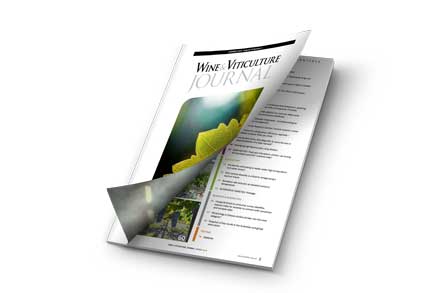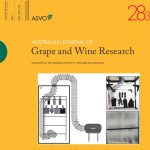Some timely food for thought on the topic of fermentation ahead of Vintage 2019 is in the just-released Summer 2019 issue of the Wine & Viticulture Journal.
Regular contributor Erika Syzmanski looks into the non-Saccharomyces yeast Lachancea thermotolerans. Those partial to ‘wild’ ferments may be familiar with L. thermotolerans. It’s one of many yeast species involved in fermentation during the first few days before alcohol levels knock them out. There are also two commercial releases of the yeast available for adding complexity to inoculated ferments. Erika looks into the latest research on this yeast, including some from an Australian-French alliance, to see why it has become something of a darling among wine microbiologists looking into non-Saccharomyces options.
The Summer 2019 issue of the WVJ also contains a report by Canadian researchers who have looked into what adding sulfur dioxide at crush does to bacteria and yeast populations in uninoculated ferments and the sensory properties of the resulting wine.
And the Australian Wine Research Institute describes the findings of its studies into the effects of co-inoculation of malolactic starter cultures and the use of malolactic nutrients on the efficiency of MLF and wine quality.
Also in Winemaking are two complementary articles: the first is on blending early-harvested fruit with regularly harvested fruit to lower alcohol levels and how the composition of those wines compares with the same wines dealcoholised post-fermentation; the second looks at the effectiveness of water additions to lower high sugar concentrations in Shiraz to reduce the alcohol content of wines and what impact that has on the wine’s sensory qualities.
In Viticulture, we present the results of the investigations by a team researchers from South Australia and New South Wales into whether berry cell death increases under higher temperatures and water stress – a prudent question in a world where heatwaves and droughts are increasing in frequency and intensity.
Climate change also takes centres stage in an article by researchers from Canada and Spain who review how the hundreds of different winegrape varieties grown in the world today can help regions adapt to warming seasons.
A team of CSIRO researchers also look at the impact of rootzone temperature on the effectiveness of 140 Ruggeri rootstock to exclude salt from soil and irrigation – another important investigation in light of a warmer, drier future.
To subscribe to the Wine & Viticulture Journal click here.





















